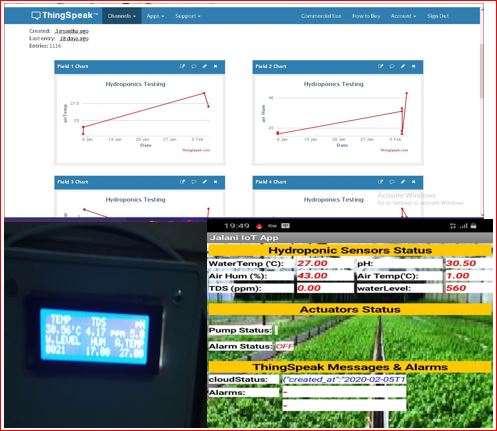The world of manufacturing is rapidly evolving, driven by the advancement of technology. One of the most transformative forces is artificial intelligence (AI), which is revolutionizing the way industries operate, especially in smart manufacturing. But what about the people behind the machines? How does AI affect workforce training in this new era? Let’s dive into the impact of AI on workforce training in smart manufacturing and how it’s shaping the future of industry.
Introduction: The Rise of Smart Manufacturing
Imagine a factory where machines communicate seamlessly, adjusting operations in real-time, and the production process is almost entirely automated. Sounds like a futuristic vision, right? Well, it’s happening right now. Smart manufacturing is all about leveraging advanced technologies like the Internet of Things (IoT), robotics, and most importantly, AI, to create intelligent factories that can adapt and optimize operations without much human intervention.
However, this technological leap doesn’t mean that humans are no longer needed. Instead, the role of the workforce is evolving, and so is the way they are trained. AI is playing a significant role in reshaping how workers are educated, upskilled, and prepared for their new responsibilities in these cutting-edge environments.
Understanding AI in Smart Manufacturing
Before diving into its impact on workforce training, it’s important to first understand what AI brings to the table in smart manufacturing. AI involves using algorithms, machine learning, and data analytics to enable machines to perform tasks that traditionally required human intelligence. In manufacturing, AI helps with predictive maintenance, quality control, process optimization, and even designing new products.
But while AI is doing all of this behind the scenes, workers are needed to monitor, operate, and maintain these systems. This is where workforce training becomes a critical factor in ensuring that the human element remains in harmony with the machines.
Traditional Workforce Training vs. AI-Driven Training
Historically, workforce training in manufacturing involved on-the-job learning, mentorship, and classroom-style sessions focused on skills like machine operation, safety protocols, and quality assurance. But with AI’s arrival, these traditional methods are being supplemented or even replaced by more advanced, tech-driven training solutions.
AI-driven training is not just about teaching workers how to use new tools; it’s about adapting learning to their specific needs, improving efficiency, and making the process more engaging. By using AI, companies can provide personalized training experiences that cater to each individual’s learning pace and style, which leads to better outcomes.
Personalized Learning with AI
One of the most exciting benefits of AI in workforce training is its ability to personalize the learning experience. AI-powered platforms can analyze a worker’s performance and tailor training programs based on their strengths and weaknesses. This means that no two employees will undergo the same training program, but each will receive the support they need to succeed.
For example, if a worker is struggling to understand how to operate a particular piece of machinery, AI can identify that gap and provide additional tutorials or simulations to help the worker improve. This kind of targeted learning helps employees progress faster, ensuring that they are always equipped with the skills they need for the job.
Virtual Reality (VR) and Augmented Reality (AR) in Training
AI isn’t limited to just traditional computer-based learning. The rise of virtual reality (VR) and augmented reality (AR) technologies, integrated with AI, is taking workforce training to new heights. VR and AR can create immersive, hands-on learning environments where workers can practice operating machines or troubleshooting issues without the risk of damaging expensive equipment.
Imagine a worker training on a complex robotic arm without actually touching the machine. They could wear VR goggles and manipulate a virtual version of the robot, learning how to perform tasks safely and efficiently. This kind of immersive experience not only boosts worker confidence but also reduces training time and increases safety.
Real-Time Feedback and Continuous Learning
AI enables real-time feedback during the training process. Workers can receive instant assessments on their performance, which helps them adjust and improve on the spot. Unlike traditional training, which might involve waiting for a manager’s evaluation or feedback, AI-driven platforms offer constant feedback loops, allowing workers to progress without delays.
Moreover, AI fosters a culture of continuous learning. As smart manufacturing evolves, so do the tools and systems. Workers can use AI-powered platforms to keep their skills updated, ensuring they stay relevant and adaptable in a fast-changing environment.
Reducing Skill Gaps and Labor Shortages
A major challenge in manufacturing today is the growing skills gap. As technology advances, the demand for highly skilled workers increases, but the supply of qualified individuals is lagging behind. This is where AI can make a significant impact.
By automating certain aspects of training, AI can help speed up the process of skill acquisition. It can also provide workers with access to specialized training that they may not have had the opportunity to pursue otherwise. As a result, AI can help close the skills gap, enabling manufacturers to build a workforce that is better equipped to handle new technologies and systems.
AI-Assisted Job Placement and Career Development
AI doesn’t just help with training; it also plays a role in career development and job placement. AI systems can analyze a worker’s skills, experience, and performance, then recommend new career paths or job roles within the company. This can be incredibly valuable in industries like smart manufacturing, where employees may need to pivot to new positions as technologies evolve.
Furthermore, AI can assist HR departments in identifying high-potential employees who could benefit from further training or development. This data-driven approach ensures that the right people are given the right opportunities, which can boost employee retention and morale.
Enhancing Safety and Reducing Risk
Safety is a top priority in manufacturing, especially as workplaces become more automated. AI-powered training programs can simulate dangerous situations that workers might encounter without putting them at risk. For instance, workers can practice responding to machine malfunctions or emergency situations in a controlled, virtual environment.
In addition, AI systems can monitor workers in real-time, identifying unsafe behaviors or practices and offering immediate corrective actions. This proactive approach to safety training ensures that workers are always aware of the risks and can take steps to avoid accidents.
The Role of Data in Workforce Training
Data is at the core of AI-driven workforce training. The more data AI systems have access to, the better they can assess an individual worker’s progress, predict areas for improvement, and personalize learning experiences. By analyzing data from sensors, machine performance logs, and even worker performance metrics, AI can optimize the training process in real time.
This data-driven approach ensures that training is not just a one-off event but an ongoing process that adapts as the needs of the industry and the workforce evolve.
The Human-AI Collaboration: A Balanced Approach
While AI is transforming workforce training in smart manufacturing, it’s important to remember that AI is not here to replace humans. Instead, it’s about human-AI collaboration. Workers are still needed to monitor and manage AI systems, troubleshoot problems, and provide the critical thinking that machines lack.
The most successful workforce training programs will strike a balance between human expertise and AI assistance. Workers will be trained to work alongside AI, leveraging its capabilities while adding their own unique skills and problem-solving abilities.
Overcoming Resistance to AI in Training
Change is often met with resistance, and this is true for AI in workforce training. Some workers may feel intimidated by the technology or fear that automation will render their jobs obsolete. Overcoming this resistance requires clear communication, transparency, and a focus on the benefits that AI brings to both workers and companies.
By highlighting how AI can make jobs easier, safer, and more rewarding, manufacturers can encourage employees to embrace these new technologies and see them as allies rather than threats.
Future Trends in AI and Workforce Training
As AI continues to evolve, so will its role in workforce training. Future trends may include even more personalized learning experiences, as AI systems become smarter and more capable of understanding individual workers’ needs. Additionally, AI-powered training could expand to include remote or off-site workers, enabling manufacturers to provide consistent, high-quality training no matter where their employees are located.
Conclusion: Embracing the Future of AI in Workforce Training
AI is not just transforming the machines on the factory floor; it’s also revolutionizing how workers are trained, upskilled, and developed. By embracing AI in workforce training, smart manufacturing companies can create more efficient, safe, and adaptive work environments while closing skills gaps and fostering continuous learning.
The future of manufacturing lies in the harmonious integration of humans and AI, and with the right training, the workforce of tomorrow will be equipped to thrive in this high-tech landscape.
FAQs
- How is AI improving workforce training in manufacturing? AI improves training by personalizing learning, providing real-time feedback, and creating immersive training environments with VR and AR. It allows workers to learn at their own pace and ensures they stay up to date with evolving technologies.
- What role does AI play in reducing skill gaps in manufacturing? AI helps bridge the skill gap by automating certain aspects of training and offering personalized learning experiences. This accelerates skill acquisition and ensures workers are equipped to handle new technologies and roles.
- How does AI contribute to workplace safety in manufacturing? AI contributes to safety by simulating dangerous scenarios in training, providing real-time monitoring of workers’ actions, and offering instant corrective feedback to reduce the risk of accidents.
- Can AI replace workers in manufacturing? AI is designed to complement human skills, not replace workers. It enhances their abilities and helps them work more efficiently, but human expertise and decision-making are still essential in a smart manufacturing environment.
- What are some challenges in implementing AI for workforce training? Challenges include resistance to change, the need for ongoing adaptation of training programs, and ensuring that workers feel supported rather than replaced. Clear communication and transparency are key to overcoming these hurdles.


